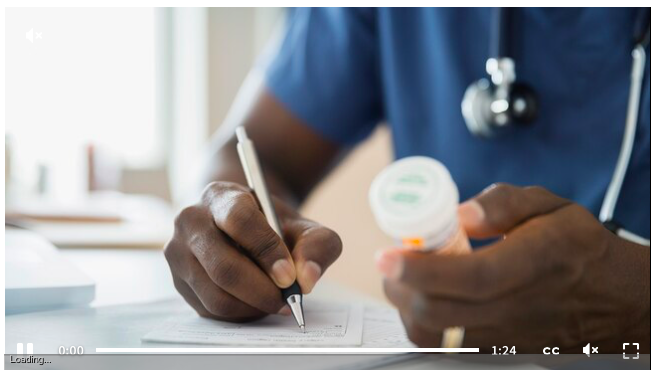Leprosy Overview
 Leprosy is an infectious disease that causes severe, disfiguring skin sores and nerve damage in the arms, legs, and skin areas around the body. The disease has been around since ancient times, often surrounded by terrifying, negative stigmas and tales of leprosy patients being shunned as outcasts. Outbreaks of leprosy have affected, and panicked, people on every continent. The oldest civilizations of China,
Leprosy is an infectious disease that causes severe, disfiguring skin sores and nerve damage in the arms, legs, and skin areas around the body. The disease has been around since ancient times, often surrounded by terrifying, negative stigmas and tales of leprosy patients being shunned as outcasts. Outbreaks of leprosy have affected, and panicked, people on every continent. The oldest civilizations of China,
Egypt, and India feared leprosy was an incurable, mutilating, and contagious disease.
However, leprosy is actually not that contagious. You can catch it only if you come into close and repeated contact with nose and mouth droplets from someone with untreated leprosy. Children are more likely to get leprosy than adults.
Today, about 180,000 people worldwide are infected with leprosy, according to the World Health Organization, most of them in Africa and Asia. About 100 people are diagnosed with leprosy in the U.S. every year, mostly in the South, California, Hawaii, and some U.S. territories.
What Causes Leprosy?
Leprosy is caused by a slow-growing type of bacteria called Mycobacterium leprae (M. leprae). Leprosy is also known as Hansen's disease, after the scientist who discovered M. leprae in 1873.
What Are the Symptoms of Leprosy?
Leprosy primarily affects the skin and the nerves outside the brain and spinal cord, called the peripheral nerves. It may also strike the eyes and the thin tissue lining the inside of the nose.
The main symptom of leprosy is disfiguring skin sores, lumps, or bumps that do not go away after several weeks or months. The skin sores are pale-colored.
Nerve damage can lead to:
Loss of feeling in the arms and legs
Muscle weakness
It usually takes about 3 to 5 years for symptoms to appear after coming into contact with the leprosy-causing bacteria. Some people do not develop symptoms until 20 years later. The time between contact with the bacteria and the appearance of symptoms is called the incubation period. Leprosy's long incubation period makes it very difficult for doctors to determine when and where a person with leprosy got infected.
Forms of Leprosy
Leprosy is defined by the number and type of skin sores you have. Specific symptoms and treatment depend on the type of leprosy you have. The types are:
Tuberculoid. A mild, less severe form of leprosy. People with this type have only one or a few patches of flat, pale-colored skin (paucibacillary leprosy). The affected area of skin may feel numb because of nerve damage underneath. Tuberculoid leprosy is less contagious than other forms.
Lepromatous. A more severe form of the disease. It has widespread skin bumps and rashes (multibacillary leprosy), numbness, and muscle weakness. The nose, kidneys, and male reproductive organs may also be affected. It is more contagious than tuberculoid leprosy.
Borderline. People with this type of leprosy have symptoms of both the tuberculoid and lepromatous forms.
How Is Leprosy Diagnosed?
If you have a suspicious skin sore, your doctor will remove a small sample of the abnormal skin and send it to a lab to be examined. This is called a skin biopsy. A skin smear test may also be done. With paucibacillary leprosy, no bacteria will be detected. In contrast, bacteria are expected to be found on a skin smear test from a person with multibacillary leprosy.
How Is Leprosy Treated?
Leprosy can be cured. In the last two decades, 16 million people with leprosy have been cured. The World Health Organization provides free treatment for all people with leprosy.
Treatment depends on the type of leprosy that you have. Antibiotics are used to treat the infection. Long-term treatment with two or more antibiotics is recommended, usually from six months to a year. People with severe leprosy may need to take antibiotics longer. Antibiotics cannot treat the nerve damage.
Anti-inflammatory drugs are used to control nerve pain and damage related to leprosy. This may include steroids, such as prednisone.
Patients with leprosy may also be given thalidomide, a potent medication that suppresses the body's immune system. It helps treat leprosy skin nodules. Thalidomide is known to cause severe, life-threatening birth defects and should never be taken by women who are pregnant or women who may become pregnant.
Leprosy Complications
Without treatment, leprosy can permanently damage your skin, nerves, arms, legs, feet, and eyes.
Complications of leprosy can include:
Blindness or glaucoma
Disfiguration of the face (including permanent swelling, bumps, and lumps)
Erectile dysfunction and infertility in men
Kidney failure
Muscle weakness that leads to claw-like hands or an inability to flex the feet
Permanent damage to the inside of the nose, which can lead to nosebleeds and a chronic, stuffy nose
Permanent damage to the nerves outside the brain and spinal cord, including those in the arms, legs, and feet
Nerve damage can lead to a dangerous loss of feeling. A person with leprosy-related nerve damage may not feel pain when the hands, legs, or feet are cut, burned, or otherwise injured.
WebMD Medical Reference Reviewed by Stephanie S. Gardner, MD on April 23, 2019
Source: https://www.webmd.com/skin-problems-and-treatments/guide/leprosy-symptoms-treatments-history#1









